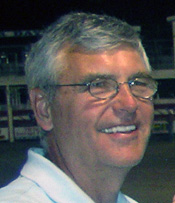
By Douglas Martin
June 15, 2011
Paul Olson, who wrote in a guest opinion column published in late May, argues against Sealaska’s land bill with speculation, not science, when he states that its passage will hurt fish runs. These arguments are simply not supported by scientific findings. Olson’s assertion that “roads and logging directly contribute to stream temperature problems” is not consistent with findings in the Tongass Annual Monitoring & Evaluation Reports, which are published by the U.S. Forest Service. These reports show that summer water temperatures in the Prince of Wales streams are not associated with past logging and especially during the years when fish kills were observed. For example, the 2001 report (a year with reportedly large fish kills) found no discernable difference in maximum water temperature between logged and unlogged streams. An intensive 2009 study of three Tongass National Forest streams found that even two of the streams where there had been no logging routinely exceeded high temperature standards, which are set by the state of Alaska. Reporting on that study, the Tongass Monitoring and Evaluation Report stated that “the state’s numeric criteria, as currently written and applied, may be too stringent to reflect natural conditions, even in headwater basins of Southeast Alaska.” Over the last 50 years periodic fish kills have been observed in Southeast Alaska streams. These fish kills correspond with years in which there were large runs of salmon during the late summer and fall, when water levels were low during periods of sunny, warm weather. In 1990 the Alaska Working Group on Cooperative Forestry/Fisheries Research investigated the cause of fish kills and concluded that low dissolved oxygen levels in holding pools, not high temperature, was the primary factor killing salmon. The turbulence of flowing streams disperses oxygen in the water, which salmon and other aquatic animals depend on for respiration. When salmon are crowed in small pools during a period of low stream flows (turbulence is limited) the demand for oxygen is greater than the supply, and fish die. That, not excessively high water temperatures, is what the working group found to be the cause of the fish kills it investigated on Prince of Wales Island. So yes, fish kills happen on Prince of Wales Island and they will continue to happen in response to natural events that are beyond human control. Olson blames logging for high stream temperatures, but scientific findings don’t support that claim. Finally, Olson contends that streamside buffer zones that are retained for stream protection are temporary, and will blow down after logging occurs. Again, the scientific record doesn’t agree. A survey of 120 randomly selected buffer zones on Sealaska lands, which was published in the Canadian Journal of Forest Research in 2007, found that blow down was only 7.5 percent greater at sites that had been logged than at sites that had not been logged. Long term monitoring of streams on Sealaska lands has shown no indication of salmon habitat degradation, and the habitat has benefited at some sites where trees were blown into streams and created pools and cover which are important to the survival of juvenile and adult salmon. Don’t believe urban myths about logging impacts which are not relevant to modern forest practices. Alaska’s forest practices rules are based on the best available scientific knowledge and are subject to revision through an ongoing adaptive management program. This cooperative effort is supported by Sealaska and state agencies, and is the common sense pathway to forest stewardship and the sustainability of salmon throughout the region. Douglas Martin About: "Douglas Martin, Ph.D., started Martin Environmental in 1996 and works as an independent consultant, and research scientist. For five years, Martin was co-chairman of the Cooperative Monitoring and Evaluation Committee of the Washington Forest Practices Adaptive Management Science Program. His consulting work includes numerous environmental investigations ranging from California to Alaska, including an assessment of impacts from the Exxon Valdez oil spill on salmon. He has a Ph.D. in fisheries science from the University of Washington and is an affiliate professor at the School of Forest Resources, University of Washington." Received June 14, 2011 - Published June 15, 2011
Related Viewpoint:
Viewpoints - Opinion Letters:
and do not necessarily reflect the opinions of Sitnews. Your full name, city and state are required for letter publication.
|
||
